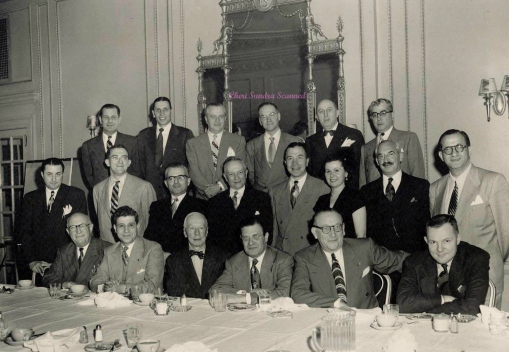Hotel Sterling Demolition: One Year Later
NOTE:
To mark the one year anniversary of the demolition of the Hotel Sterling, Welcome to the Zombie Hotel Sterling will be available as a FREE digital download on Amazon from July 25th thru July 29th. Get ’em while you can! If you don’t have a Kindle, the app is free too.

Once upon a time, the city known as Wilkes-Barre enjoyed days of prosperity, primarily because of the growth of the anthracite industry in neighboring towns. This hub of transportation and business activity created a need within itself to build a new hotel, during the golden era of the Grand Luxury Hotel.
When newspaper headlines said “Construction Work on Sterling Will Begin This Month”, a survey by “recognized authorities” concluded that the original plan for a strictly commercial hotel would not sufficiently meet the needs of the community. It was “decided advisable to provide for a first class modern building in every way”. The construction cost was estimated at $225,000.
In 1897, the Wilkes-Barre Times ran these GROUND PLANS for the hotel:
That edition of the paper was so popular, due to the community buzz about the construction of the hotel, that the paper had to reprint the edition “by the request of those who wish, but cannot get copies to send to friends and relatives in other cities”.
Alongside the plans were some of the names suggested for the hotel by readers of the paper. The suggestions included The Susquehanna, Hotel Hollenback, Hotel Anthracite, The Anthracite, Rivera Hotel Sterling, Hotel Susquehanna, The New Century, The Keystone, Hotel Ganoga, Riverside, Hotel de Sterling, Hotel Farragut, The Phoenix, The Gertrude, The Waldegrave and The Parish.
The Hotel opened in 1898, and the good times began!


Hotel Sterling Crystal Ballroom during an event

Hotel Sterling, Crystal Ballroom 2012
Sadly, a little over a hundred years later, the Hotel Sterling found itself in a community struggling to find a practical use for its aging and now out-dated structure full of history and sentiment. Wilkes-Barre is a community struggling to reclaim a sustainable economy and way of life, and memories aren’t enough to fund historical preservation projects. Demolition began on the Hotel Sterling on July 25, 2013.

~*~*~*~*~
How did the Hotel Sterling morph from a much anticipated Grand Luxury Hotel into a hopeless abandonment? Hear the tale as told by the Hotel Sterling in:
WELCOME TO THE ZOMBIE HOTEL STERLING

July 25th Thru July 29th on Amazon.com
~*~*~*~*~
Return To Guerrilla History
Cheri Sundra © 2014
All Rights Reserved









